Did you know that replacing red meat with high-quality vegetarian protein sources reduces your chances of heart disease? Yep, turns out that steak for dinner every night isn’t the best choice.
The good news is there are plenty of vegetarian sources of protein that are not only healthful but delicious.
So say goodbye to the stereotype of bland, soggy tofu, and let's start!
Vegetarian And Vegan
1. Eggs – Contains essential nutrients
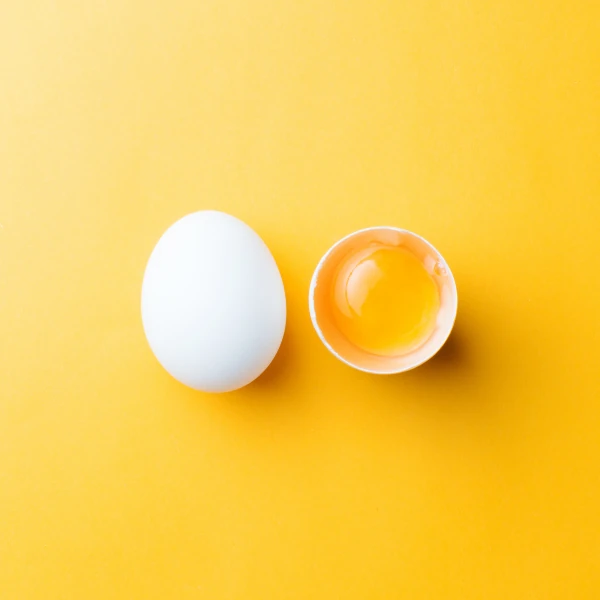
Eggs are one of the most nutritious foods for you. Yes, they have some cholesterol, but they’re also packed with vitamins, minerals, and — you guessed it — protein. One egg has only 88 calories and a whopping 6 grams of protein.
2. Broccoli – More protein than beef
Yep, broccoli is an excellent source of protein. Per calorie, it even has more protein than beef! One serving of half a cup of broccoli has only 34 calories and 3 grams of protein. Compared to the same serving size of beef, broccoli has 11% more protein per calorie.
3. Brussel sprouts – More delicious than you think
Another vegetable with high protein per calorie is the humble brussel sprout. One serving has almost 4 grams of protein. Plus, they’re fat-free and high in fiber. Try them roasted, steamed, or chopped up in a salad.
4. Potatoes – Not just a carb
Most people lump potatoes into a “refined carb” category, but that’s not the whole story. One baked potato has almost two grams of protein. Keep the skin on, and you’re boosted to 5 grams in a single Russet potato. Impressive!
5. Cauliflower – Our new favorite pizza crust
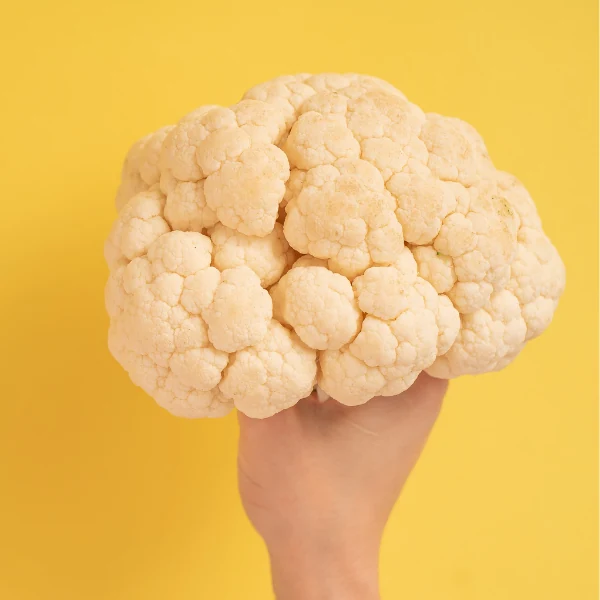
Cauliflower weighs in at over 2 grams of protein per 1 cup serving. Though this vegetable is often thought of as broccoli’s bland sibling, there are dozens of ways to prepare it to make it delectable. You can even turn it into a high-protein, low-fat pizza crust!
6. Chinese cabbage – Low calories, high protein
Say goodbye to your notions of cabbage being only for thin, depressing soups. One serving of Chinese cabbage has only 13 calories yet boasts 1.5 grams of protein. That’s an incredible bang for your caloric buck. Add it to your fried rice for a healthy boost.
7. Spirulina – More iron than raw spinach
This superfood is a blue-green algae that comes from bodies of saltwater. Before you turn your nose up at eating algae, hear us out! Just 1 tablespoon of this stuff has a whopping 4 grams of protein! Add it to your next smoothie or blend it into guacamole.
8. Sun-dried tomatoes – Excellent topper
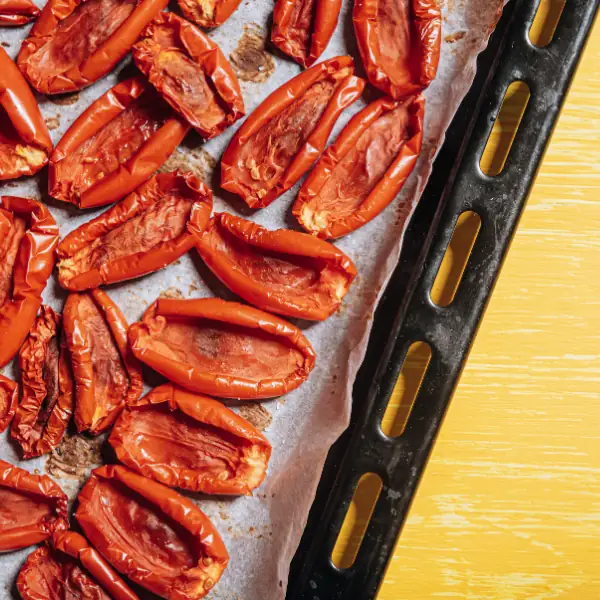
Sun-dried tomatoes aren’t just delicious on pasta and pizza. They’re also an excellent source of protein — one cup has a little over 7 grams. Pair it with hummus in a wrap for double the vegetarian protein.
9. Guava – A South American superfood
Guava is a superfood from South America, and it absolutely needs to be in your diet. It’s packed with antioxidants that help fight diseases and reduce premature aging. Plus, with 1.5 grams of protein per fruit and only 37 calories, it helps boost your fruit and protein intake.
9. Artichokes – An underrated vegetable
Artichokes are loaded with nutrients and are — like most vegetables — fat-free. One serving of 100 grams of artichoke has almost 3 grams of protein. Pair them with sun-dried tomatoes in your next pasta dish to double down on the protein in your recipe.
10. Avocado – Not just for tacos
As if we needed another excuse to eat avocado! Just 1 cup of this mashed fruit has 4.6 grams of protein. Plus, they’re high in monounsaturated fat, which is the good kind. So go ahead, eat that avocado toast.
11. Peanut butter – A versatile condiment

There’s nothing quite like a PB&J to take most of us back to childhood. Peanut butter is an excellent source of protein, with one serving containing a whopping 10 grams! The key is to enjoy this nut butter in moderation. It’s not a low-calorie or low-fat food. Also, watch out for brands that contain added sugar (especially high-fructose corn syrup) or hydrogenated/palm oils.
12. Asparagus – Can help you lose weight
I hope it’s clear by now that vegetables can be surprising sources of protein. Take asparagus — 1 cup of raw spears has almost 3 grams of protein. Couple that with only 27 calories, and you have a low-cal way to boost your protein intake. Protein is one of the key things to prioritize if weight loss is your goal.
13. Watercress – More than just a garnish
Watercress is a dark, leafy plant that grows in natural spring water. Once thought of as little more than a garnish, watercress is now gaining popularity for its numerous health benefits. In fact, the CDC ranks it #1 in their list of powerhouse fruits and vegetables. A single cup of chopped watercress has only 3 calories and almost 1 gram of protein. Add some to your next salad for an instant nutritional boost.
14. Edamame – A complete protein
We honestly can’t say enough good things about edamame. It’s one of the few vegetarian options with all 9 essential amino acids, which are the building blocks of protein. A 1-ounce serving has 10 grams of protein and only 120 calories. That means a ½ cup serving has an incredible 40 grams of protein!
15. Tofu – Don’t knock it until you try it
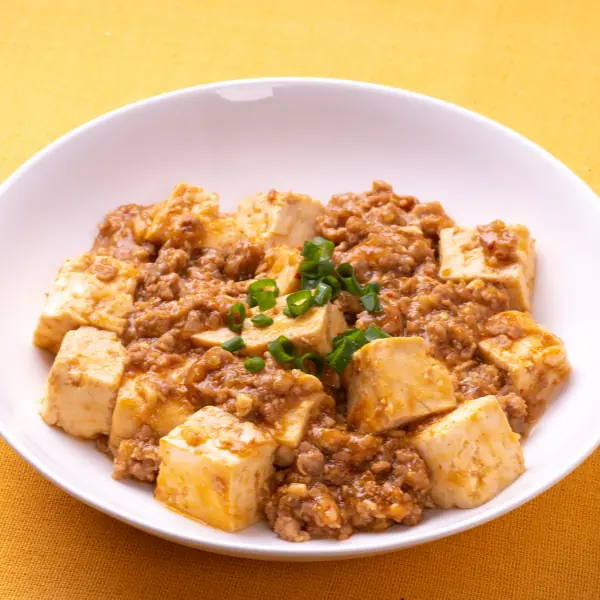
Tofu gets a bad rap for being bland, but in reality, it’s all about how you prepare it. Tofu is extremely receptive to flavoring and works incredibly well if you marinate it in your favorite sauce overnight. A ½ cup serving has 10.5 grams of protein.
16. Tahini – More than just a sauce
Tahini is a Middle Eastern condiment made from ground sesame seeds. It’s super versatile and surprisingly high in protein — just 1 tablespoon as 2.5 grams. Use it as a salad dressing, spread it in a wrap, or bake with it.
17. Seitan – It’s pronounced “Say-tan” not “Satan”
Seitan is sort of like tofu’s lesser-known cousin. It’s a versatile vegan protein made from rinsing starch from wheat dough. It’s got a mild, savory taste and works well as a meat substitute. You can make your own or find it in both specialty food stores and regular grocery stores as the main ingredient in many fake meats. One 85g serving of seitan strips offers an impressive 21 grams of protein.
18. Nutritional yeast – A vegan cheese flavoring
Long used as a vegan substitute for cheese, nutritional yeast is a surprising source of protein. It’s got a slightly nutty, cheesy flavor. It’s got about as much potassium as a small banana and about ⅓ of the daily recommended zinc. A single heaping tablespoon of it boasts 9 grams of protein. Add it to soups, casseroles, gravies, or pot pies for a tasty protein boost.
19. Soy milk – Healthier than dairy
Noticing how many soy products are on this list? Edamame, tofu, and now soy milk are all excellent sources of protein. Soy milk contains heart-healthy unsaturated fats as well as magnesium, iron, B vitamins, and potassium. One 8-ounce serving contains 6 grams of protein, too, so you basically can’t go wrong with swapping out your dairy for this.
20. Dried chervil - The forgotten herb
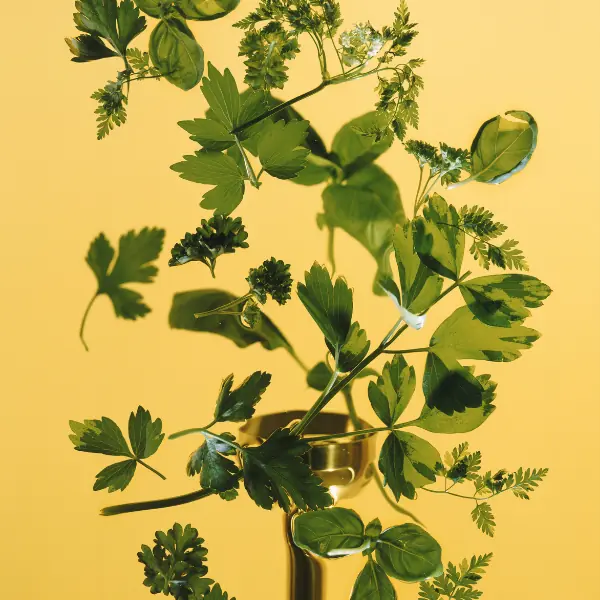
Dried chervil is related to French parsley. It’s got a subtle flavor that pairs well with more-known herbs like chives and tarragon. A single tablespoon contains about half a gram of protein, which is impressive for a spice. Will it make or break your muscle building? Nope. But if you’re trying to find ways to sneak protein into your diet, it can’t hurt.
21. Dried basil - A surprising source of protein
Similar to chervil, basil is an herb with a surprising amount of protein. A tablespoon of dried basil has an entire gram of protein. Basil is known as the king of herbs and is best enjoyed fresh.
22. Tarragon - A protein powerhouse (for a spice)
Speaking of tarragon, it’s another herb that makes the list. It’s slightly licorice-flavored and is popular in French and Italian cuisine. You can make tarragon butter to drizzle on shellfish or finely chop it and add it to your omelet to boost the protein from your eggs. In terms of protein, 1 tablespoon contains an entire gram.
23. Goji berries - A dried superfood
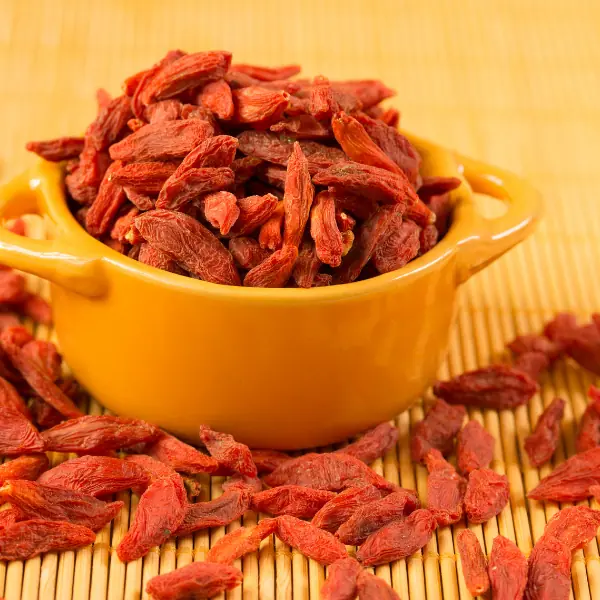
Goji berries are small, red berries that are high in antioxidants, B vitamins and are a complete protein. Speaking of protein, a 1-ounce serving contains a whopping 4 grams of protein. That’s a lot for a fruit! Sprinkle the berries on your Greek yogurt or bake them into protein muffins.
24. Ancho peppers - Boost protein and flavor
Ancho peppers are dried poblano peppers with a fruity, smoky taste and mild heat. They’re popular in Mexican dishes and add a wonderful flavor. A single dried pepper has 2 whole grams of protein, making it an easy way to not only spice up your dish but boost your protein levels.
Legumes, Nuts, Seeds, and Grains
25. Almonds - Just a handful boosts protein intake
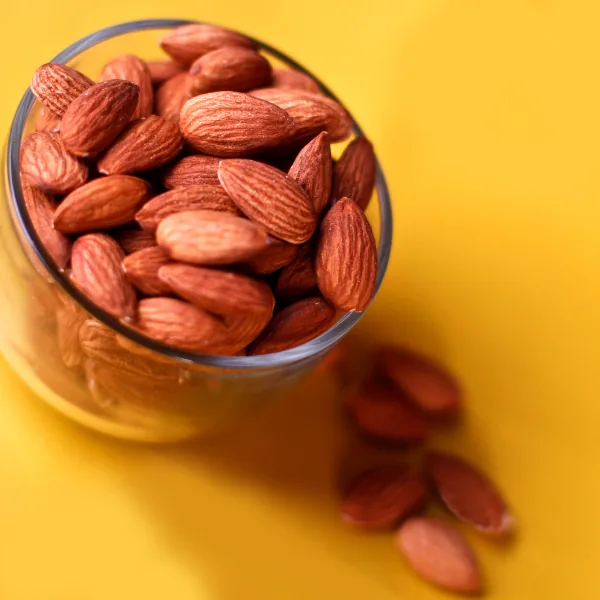
Almonds get a bad rap for taking so much water to grow, but they’re an excellent source of protein. Just 1 ounce (approximately 23 raw almonds) gets you 6 grams of protein. They’re also high in fiber, antioxidants, and vitamin E. Top your yogurt or cottage cheese with a handful of almonds to enjoy better nutrition.
26. Oats - More than just a carb
Most people think of oats as a pure carb breakfast, and it’s true that’s their main macronutrient. However, just 1 cup of oats gets you 10 grams of protein. If you add a nut butter or almonds, you get even higher protein levels. Oats are also super high in fiber, making them a healthy choice no matter when you eat them.
27. Oat bran - Even healthier than oats
Oat Bran is the outer husk of the oat grain. It usually gets shelled during the milling process. When the bran is left on, it’s called “whole grain oats.” The bran contains most of the fiber of oats, so it’s a good idea to choose this instead of rolled oats. A single cup of uncooked oat bran contains a whopping 16 grams of protein.
28. Quinoa - Basically a superfood
If you haven’t heard of quinoa by now, you must be living under a rock. This whole grain is all the rage in the health and fitness world. It’s technically a seed but is prepared and eaten like a grain. Quinoa is extremely nutrient-dense, including 8 grams of protein in a single cup. It’s also super versatile—use it as a base for a breakfast bowl, swap it in place of rice, add it to your favorite at-home veggie burger recipe, and more.
29. Lentils - Can help you lose weight
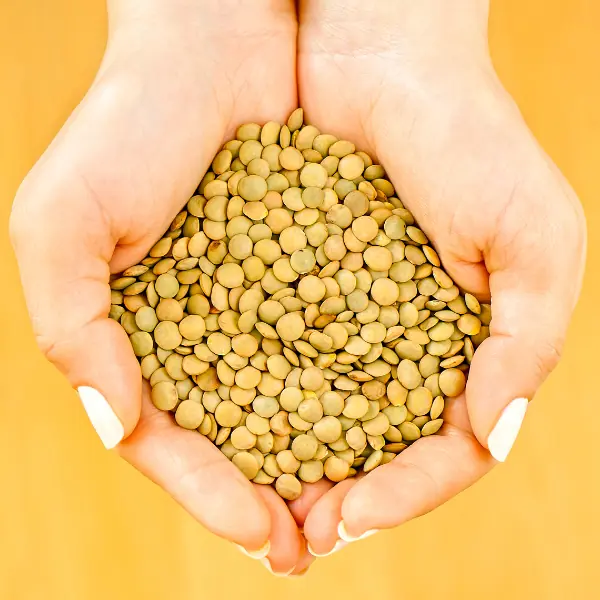
Lentils are yet another food that’s super versatile and packed with nutrients. Just 1 cup of lentils boats 15 grams of protein, and 13.5 grams of fiber. That same cup also has only about 300 calories, meaning it keeps you fuller for longer without adding a ton of calories to your day. Make a lentil curry, add them to salads, or spice them up with an ancho pepper.
30. Ezekiel bread - Sprouted grains for protein
People are obsessed with Ezekiel bread, and for a good reason. This sprouted grain bread is one of the healthiest options on grocery store shelves. If you put 2 slices together to make a sandwich, you get 5 grams of protein. It’s also a great source of amino acids and fiber.
31. Hemp seeds – High in omega-3s and omega-6s
Seeds are a bit ridiculous in terms of their nutritional value (high in iron, calcium, magnesium, phosphorous, and more). Hemp seeds are no exception. A single tablespoon has 4.5 grams of protein. Sprinkle it over your Greek yogurt for a nutritious boost.
32. Pumpkin seeds - Save them next Halloween

There are quite a few seeds that are excellent sources of protein, and pumpkin seeds are no exception. A single ounce has less than 100 calories and almost 5 grams of protein. This makes them an ideal afternoon snack or topper for yogurt. Next Halloween, save the seeds from your jack-o’-lantern to roast, or make sure to buy unsalted, whole seeds from your local store. Pumpkin seeds can help reduce the risk of heart disease and are an excellent source of magnesium.
33. Peanuts - Not just a comic strip
Similar to peanut butter, eating raw peanuts as a snack is a great idea. A serving (approximately 1–2 ounces of raw nuts) yields more than 7 grams of protein. That’s more protein than any other nut! Plus, you get vitamin E, magnesium, folate, copper, phosphorus, and fiber. Add a handful of peanuts (raw and shelled) to your diet each day for improved health.
34. Black beans - An excuse to eat more tacos
As if we needed another reason to eat more tacos! Black beans are stellar sources of fiber and protein. A ½ cup serving has an impressive 18 grams of fiber and 8 grams of protein. Couple black beans with brown rice or quinoa, and you’ve got not only a complete set of protein but also a delicious meal. Or, to shake things up, try a black bean pasta instead of the usual whole grains.
35. Lima beans - Love them or hate them
There doesn’t seem to be a middle ground on lima beans — people either love them or can’t stand them. Either way, they’re a great source of protein with a ½ cup serving containing 5 grams. Get creative with your preparation to jazz up this bean, including serving them with roasted pumpkin seeds for a double whammy.
36. Tempeh - Tofu’s other cousin
Tempeh is tofu’s other, more misunderstood cousin. It’s technically a grain, though it’s made from soybeans like tofu. It’s a whole soybean product that undergoes a fermentation process, meaning it’s easy for your body to digest. Plus, a single cup serving gets you a massive 33 grams of protein! Don’t be intimidated by its preparation either; here are 6 simple ways to cook with it.
37. Pigeon peas - We didn’t know what they were at first either
Pigeon peas are a legume popular in Puerto Rican cuisine. They’re actually quite popular worldwide because they pack a nutritional punch: 1 cup cooked offers 11 grams of protein and more than 100% of your daily intake of fiber. Legumes are super adaptable; mix and match them with quinoa, lentils, or black beans for a super healthy side dish.
38. Chickpeas - Also known as garbanzo beans

Available fresh, canned, frozen, or dried, chickpeas make a great snack. A 1 cup serving provides almost 15 grams of protein. For a tasty movie snack, try removing their outer layer by rolling them between your fingers. Then coat them with your favorite spices and roast them. They’ll replace popcorn as your new go-to in no time.
39. Pistachios - Can help fight cancer
These tasty nuts are another nutritional powerhouse. Incorporating them into your diet can help reduce your risk of heart disease, respiratory disease, and even cancer. They’re so delicious they can be easy to overindulge, so stick to a 1 ounce serving (about 49 pistachios). That serving yields almost 6 grams of protein. Try buying them in the shell to make it harder to mindlessly snack.
40. Chia seeds - Not just to grow on heads anymore
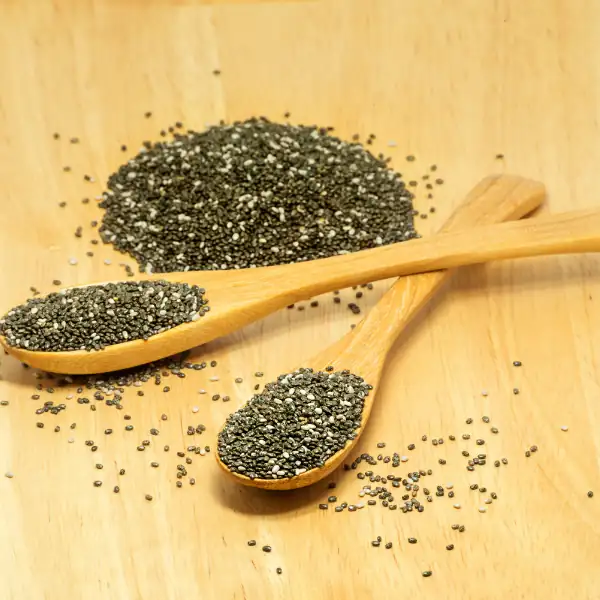
Chia heads were popular in the 1980s, and now their seeds are popular for nutrition. They’re excellent sources of fiber, omega-3s, and minerals like iron, calcium, magnesium, and zinc. A 1-ounce serving contains almost 5 grams of protein and 10 grams of fiber. Consider sprinkling these seeds on your breakfast bowl or coating energy balls with them.
41. Spelt - A popular ancient grain
Spelt is an ancient grain enjoying a surge in popularity recently. A single cup provides 10 grams of high-quality protein. It’s got a nuttier, more mild flavor than wheat. It’s a great source of carbs, fiber, and minerals. Use it like you would anytime you’d cook rice, quinoa, or lentils to shake up your diet.
42. Teff - Technically a seed
Teff is another grain that’s technically a seed, but you use it in the same way as other grains like rice, so that’s what it gets labeled. It’s similar to spelt in terms of flavor and makes excellent porridge or stew. It’s a super durable crop, growing where other grains don’t thrive. A single cup of cooked teff nets you almost 10 grams of protein.
43. Amaranth - Another ancient grain
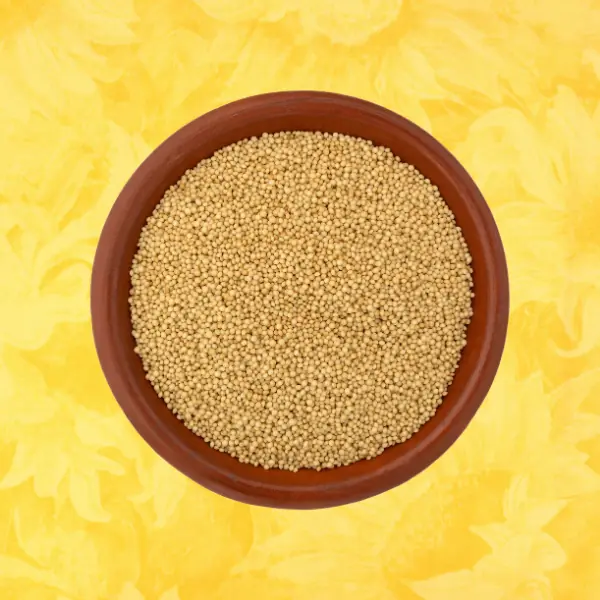
This popular ancient grain is an excellent gluten-free option with tons of nutritional value. It’s one of the few complete vegetarian proteins, like edamame, that contains all nine essential amino acids. It also has lunasin, which is a peptide believed to have anti-inflammatory properties and may help prevent cancer. Serve yourself one cup of this grain and enjoy almost 10 grams of complete protein.
44. Brazil nuts - Cancer-fighting health
Scientists have long studied the relationship between nutrition and cancer. One nutrient in particular — selenium — may play a critical role in preventing certain cancers. Brazil nuts contain the richest source of natural selenium. A 28-gram serving (about 6 nuts) also contains 4 grams of protein. Fight cancer and build your muscles at the same time.
45. Pine nuts - Roast them to perfection
Joining our list of nuts are pine nuts. They’re similar to brazil nuts in terms of protein: a 28-gram serving has almost 4 grams. These nuts are high in fat and carbohydrates, so eat them sparingly and/or mix them up with other nut options. Pine nuts are high in zinc and magnesium and contain iron, potassium, and fiber.
46. Walnuts - Helps you manage your weight
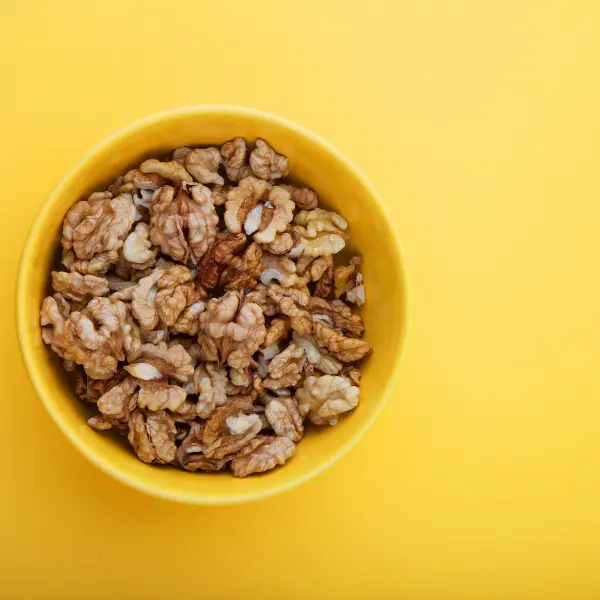
Walnuts are the classic nut to blend into a delicious pesto sauce. They contain essential omega-3 and omega-6 fatty acids, biotin, and vitamin E. They’re also super high in fiber, meaning you get full with less and stay full for longer, helping with weight management. Finally, a 28-gram serving gets you just over 4 grams of protein.
47. Cashews - Full of healthy fats
Cashews round out our list of high-protein nuts. These nuts contain roughly the same amount of protein as walnuts, coming in at just over 4 grams per 28-ounce serving. Plus, they’re high in monounsaturated and polyunsaturated fats, which boost heart health. Basically, if you want to up your daily protein intake, eat a handful of mixed nuts as your snack.
48. Sesame seeds - Yep, the ones on top of some burger buns
They also feature prominently in Asian cuisine as flavor enhancers and in Middle Eastern countries as the basis for tahini sauce. Just 28 grams of this seed packs just over 5 grams of protein. Use them as oatmeal or yogurt toppers or toast them in the oven.
49. Sunflower seeds - For more than just eating at a baseball game

Sunflower seeds are a common snack to find at a baseball game. However, these little seeds are handy for more than just a sports snack. A 28-gram serving contains just over 5 grams of protein and 3 grams of fiber, making them an excellent part of your diet. Add these seeds into your trail mix or bake with them.
50. Fenugreek seeds - Used in alternative medicine
These unique seeds have been used in alternative medicine for hundreds of years. They’re thought to have antidiabetic, anticarcinogenic, hypocholesterolemic, antioxidant, and immunological properties. (That’s a mouthful!) These seeds are also used as a spice, thickening agent, and for their sweet, nutty taste. A teaspoon contains almost 1 gram of protein, which is high for a spice.
52. Whole grain sorghum flour - Excellent gluten-free option
Anytime you see the words “whole grain” you’re getting solid nutrition. Sorghum is a mild, well-balanced flour that lends itself well to gluten-free baking. It’s high in antioxidants, iron, and vitamin B6. Plus, 1 cup gets you a solid 10 grams of protein. Try making muffins or banana bread with sorghum flour instead of whole wheat.
53. Whole wheat bread - A tried-and-true staple
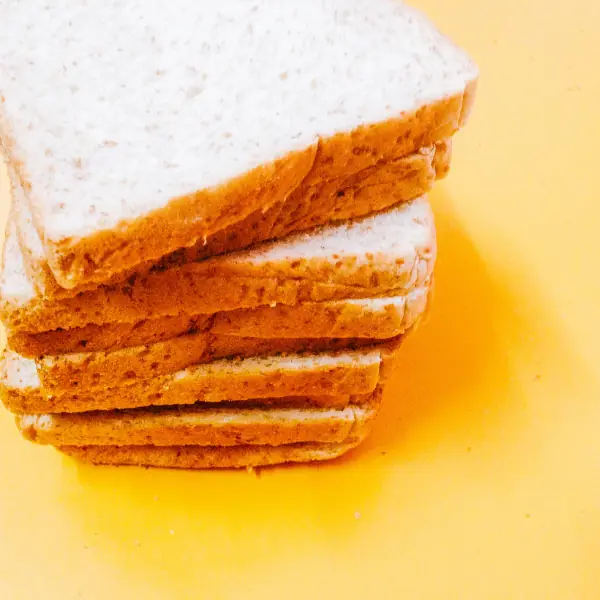
We did just say to try sorghum instead of whole wheat, but this grain still packs a nutritional punch. One slice of whole wheat bread (depending on brand) yields 5 grams of protein plus a slew of vitamins and minerals. The Dietary Guidelines of America recommend that at least half your grains be whole, so reach for that hearty brown bread.
54. Granola - Choose wisely
Granola can be an excellent source of protein if you choose the right one. Your average store-bought brand can have as much as 11 grams of protein per serving. However, they can also be chock full of sugars and way too many carbs. You’re better off making your own granola at home so you can control the ingredients.
Eat Up
The benefits of getting enough protein in your diet keep your cells in good shape, which wards off disease and cancers.
But getting enough protein on a daily basis is hard enough, even for non vegans.
So we hope this list will help you spice up your menu and make it easier for you to reach your nutritional goals.
Tell us what you think of this article in the comments and give it a share if you enjoyed it!
